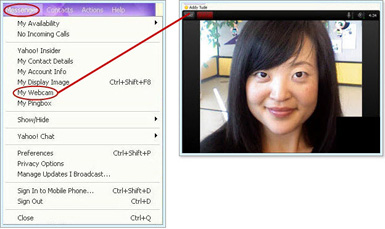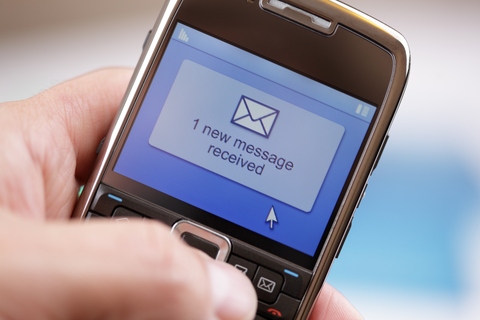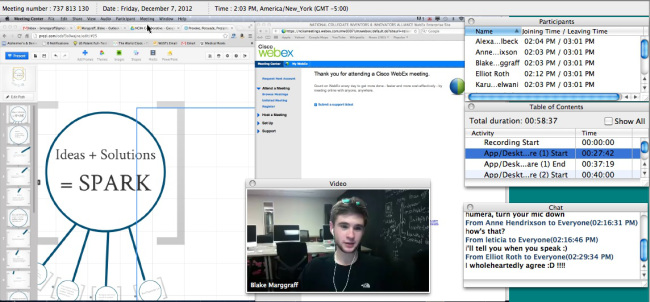The Art of Positive Presentation
… For Prezis, Interviews, Team Calls, and more!
Note: These thoughts and stories, and whatever messages or lessons they may convey, are not limited to the experiences of University Innovation Fellows. Perhaps one of the most significant strengths of the Fellows program is its ability to quite accurately simulate student entrepreneurship; the two terms are not mutually exclusive!
Before we dive into these useful and immediately applicable tips, I’d like to point out an intentional wording choice: I use “presentation” instead of “communication.” I believe that communication, while often benefiting from a positive style, need not be constantly soaked with positivity as so many self-help experts would have you believe. Presenting, on the other hand, almost universally occurs in order to promote an idea, convert an observer, or express a point of view.
With this in mind, let’s dive into some simple, helpful pointers that you can apply right after reading! Woohoo!
Wording
 This is nothing groundbreaking, but wording during verbal presentation has a tremendous bearing on how the presentation is received. Almost always, positive words and phrases foster the strongest connection and, thus, greatest bandwidth between presenter and audience. I break down my thought process before and during a presentation into three discrete parts:
This is nothing groundbreaking, but wording during verbal presentation has a tremendous bearing on how the presentation is received. Almost always, positive words and phrases foster the strongest connection and, thus, greatest bandwidth between presenter and audience. I break down my thought process before and during a presentation into three discrete parts:
Part 1: Pick your notch. Are you going for ultra-peppy, or subtly enthused? No need to figure out which words you’re specifically going to use; just decide and internalize the right level of positivity.
Part 2: Avoid “downer” words. Following is the simplest chart in the world. When you’re about to use a word or phrase from the left, try, just try, swapping it out with its positive relative on the right.
|
Negative “downer” words |
Positive “friendly” words |
|
but |
and |
|
however |
also |
|
they |
we |
|
them |
us |
|
theirs |
ours |
Sure, there are plenty of cases where “however” is harmless and “theirs” is requisite, although I would surmise that such cases aren’t as frequent as you suspect. In short, the friendlier the wording, the warmer (and more successful) the presentation.
Part 3: Use the appropriate level of complexity. Sometimes, as you might guess, my complexity of communication (oh, okay, “wordiness”) can get away from me. While this might not be something everyone keeps in mind, I always remind myself to stick with a professional, but not intimidating, speaking style. Needless to say, this style varies from one audience to another, although once my sentences begin to fade into short essays, I know it’s time to reign myself in.
Body Language
Part 1: Mirror your audience. Most readers will recognize the technique of mirroring, in which one communicating party acts and speaks similarly to his or her audience. Did you know that you can do the same thing during phone calls, video conferences, and real-life presentations? The trick is understanding that mirroring works both ways, such that if you “mirror” a desired reflection, the observer will likely begin to “reflect” that action! This is my favorite way to involve bored, zoned-out audience members. I once transformed a student in the fourth row from a half-asleep zombie to an edge-of-his-seat audience member, just by making eye contact, smiling broadly, raising my eyebrows, and leaning further forward myself! (Good thing I wasn’t too close to the edge of the stage…)
Part 2: Learn (and practice) the Neutral Position. This is another basic, oft-cited tip, but it surprises me how slowly many new presenters and speakers adopt it. From your very first presentation, using the neutral position will do two things: it will help you relax, and it will make your audience feel more comfortable watching you. Here’s how to do it:
Good body language

Bad body language
-
Hands comfortably at your sides! None of this hands-in-pockets, wrap them around your chest, try to look like a shirt model bologne.
-
Shoulder-width stance, with slightly more weight on one foot than the other. Nobody wants to watch you stand at attention the whole time. Don’t pace or “wobble” from one leg to another.
-
When you use your arms to gesture, make sure you flow with them. Don’t just keep your elbows bent the whole time. And, for the sanity of all of us audience members in the world, do NOT shake the webcam if you’re presenting during a presentation! It never fails to amaze me that otherwise savvy presenters think they can really emphasize a point by strangling their poor monitor and attached camera.
 Part 3: Record yourself. Then do it again. And again. And again. And again. A mentor once told me that before every presentation, he forces himself to run through the speech and associated materials no fewer than 20 times. I chuckled, thinking, “Oh, the poor sap. It must just not come naturally to him.” Well, I’ll concede that I find 10 rehearsals a bit superfluous, but there’s no doubt that I improve with every single run-through. I highly recommend catching yourself on video once or twice, and certainly listen to an audio recording. Put yourself in the shoes of your “captive” audience, be it listeners on a conference call or 2,000 elementary school students in an enormous auditorium. One caveat: please, don’t memorize your speech. Get the bullet points, then find enough ways to say them comfortably that you can fluidly transition from one phrase to the next. Punchy conclusions, witty one-liners, and short, intentionally repeated phrases are the only exceptions. Not memorizing will also help you stay engaged, and at the end of the day, everyone will be better off for it.
Part 3: Record yourself. Then do it again. And again. And again. And again. A mentor once told me that before every presentation, he forces himself to run through the speech and associated materials no fewer than 20 times. I chuckled, thinking, “Oh, the poor sap. It must just not come naturally to him.” Well, I’ll concede that I find 10 rehearsals a bit superfluous, but there’s no doubt that I improve with every single run-through. I highly recommend catching yourself on video once or twice, and certainly listen to an audio recording. Put yourself in the shoes of your “captive” audience, be it listeners on a conference call or 2,000 elementary school students in an enormous auditorium. One caveat: please, don’t memorize your speech. Get the bullet points, then find enough ways to say them comfortably that you can fluidly transition from one phrase to the next. Punchy conclusions, witty one-liners, and short, intentionally repeated phrases are the only exceptions. Not memorizing will also help you stay engaged, and at the end of the day, everyone will be better off for it.
What’s your experience as a student leader? Post your comments below…
 Blake Marggraff is a University Innovation Fellow and currently a sophomore and Biochemistry major at Washington University in St. Louis, where he is enjoying a life of academics, multiple business ventures, and the occasional hiking or camping trip. Prior to attending Washington University, Blake won the top award at Intel’s International Science and Engineering Fair with a project that used pegylated tin to augment the efficacy of radiation therapy for treatment of simulated cancer cells with low to mid-energy X-ray sources. Blake’s enthusiasm for entrepreneurship began with his success in numerous public speaking competitions, and was furthered by his work as a leader of local National Youth Leadership Training courses. Looking toward the future, Blake intends to help shape the bioethics and consumer biotechnology industries, while inspiring peers to engage in entrepreneurship. Connect with him on LinkedIn.
Blake Marggraff is a University Innovation Fellow and currently a sophomore and Biochemistry major at Washington University in St. Louis, where he is enjoying a life of academics, multiple business ventures, and the occasional hiking or camping trip. Prior to attending Washington University, Blake won the top award at Intel’s International Science and Engineering Fair with a project that used pegylated tin to augment the efficacy of radiation therapy for treatment of simulated cancer cells with low to mid-energy X-ray sources. Blake’s enthusiasm for entrepreneurship began with his success in numerous public speaking competitions, and was furthered by his work as a leader of local National Youth Leadership Training courses. Looking toward the future, Blake intends to help shape the bioethics and consumer biotechnology industries, while inspiring peers to engage in entrepreneurship. Connect with him on LinkedIn.





